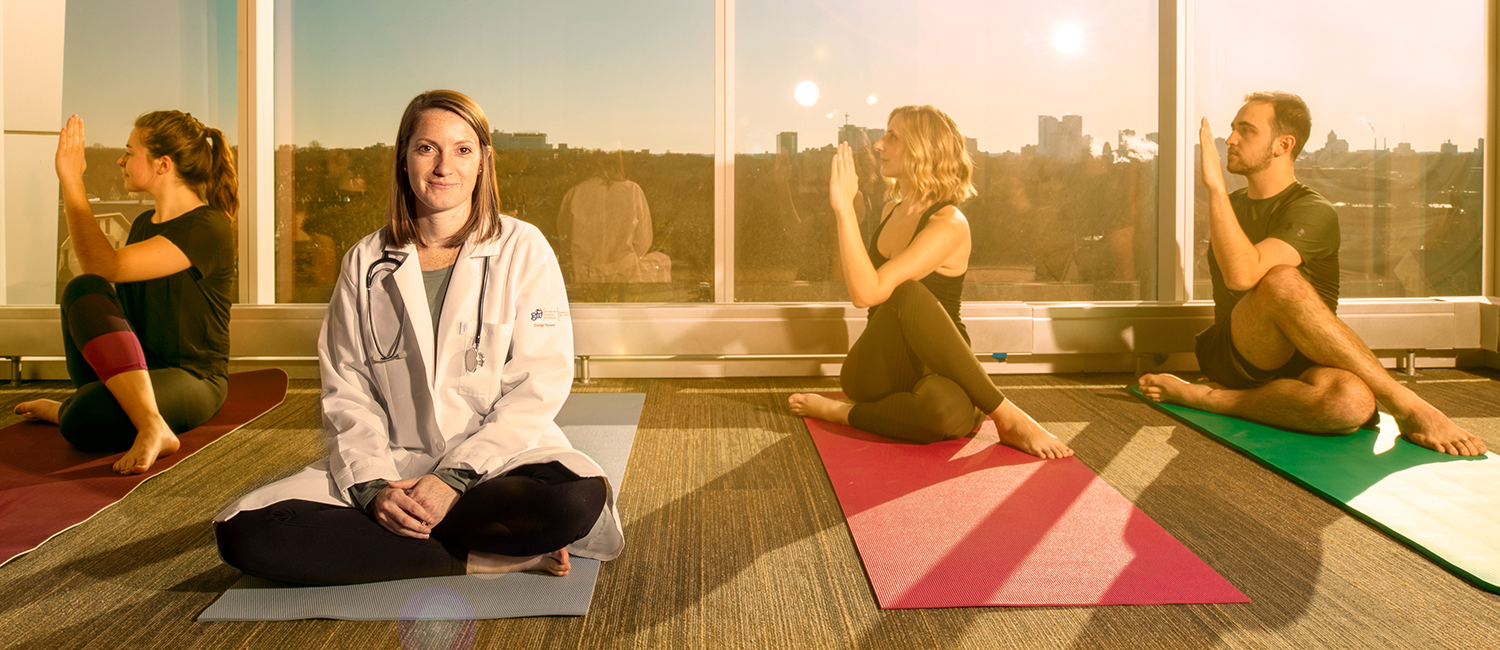
The promise that yoga poses for health
Bethany Forseth’s purple and jade yoga mat leans against a bookshelf in her spartan office. It’s an essential tool for her research into the benefits of yoga in fighting disease.
“Personal health is very subjective,” Forseth says. “A lot of people who do yoga rate their health as very high, but there are no objective measures physiologically saying that they have lower glucose levels or they have lower inflammation levels. You can’t necessarily feel those levels because they’re inside your body.”
Forseth helped fill the knowledge gap as a health sciences doctoral student by examining yoga’s impact on three health markers: mental health, inflammation and mitochondrial function, or the cells’ ability to create energy.
Dysfunction in any one of those areas is associated with higher rates of chronic diseases, but the conditions are also associated with each other.
“There are studies that show that stress is related to 80 percent of all illnesses and diseases,” Forseth says, “anything from the common flu to just not feeling well to cardiovascular disease. Stress is linked with inflammation and with mitochondrial functioning.”
Quantifying yoga posed Forseth’s first challenge, as it’s a broad field that includes many different styles and intensities. “Faster styles of yoga might be better for glucose or blood pressure,” Forseth says, “whereas the slower styles of yoga might be more impactful on mindfulness and stress reduction.” To reflect this, she developed her own gauge that measured poses per minute.
Under the guidance of a trio of advisors – Michele Polfuss, a College of Nursing associate professor, and College of Health Sciences professors Janis Eells and Jeri-Anne Lyons – Forseth conducted two studies involving two groups: newbies who’d never done yoga before, and long-timers who had practiced at least six months and up to 24 years. Blood draws were taken to help evaluate the results.
One study compared the two groups, and its results are still being analyzed. Forseth is particularly interested in the mitochondrial functioning of the long-timers, and seeing if it may have benefited from their accumulated years of physical activity.
The other study focused on using yoga as an intervention for new practitioners. Preliminary analyses showed an 11 percent reduction in their inflammation. But stress levels fluctuated, dropping 9 percent at four weeks, then rising again after eight weeks. “Mental health is not a linear thing,” Forseth says.